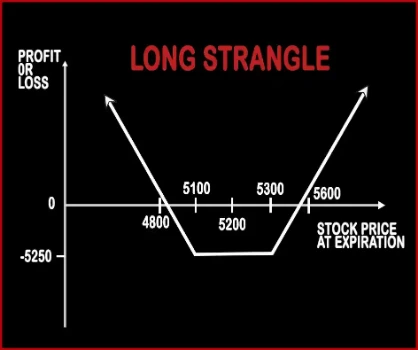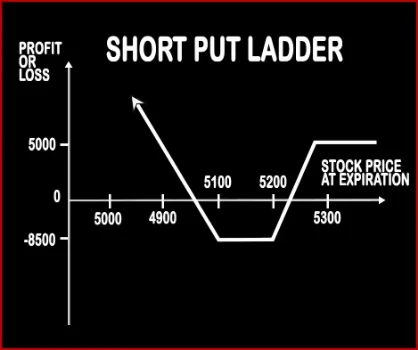Compare Strategies
| LONG STRANGLE | SHORT PUT LADDER | |
|---|---|---|

|

|
|
| About Strategy |
Long Strangle Option StrategyA Strangle is similar to Straddle. In Strangle, a trader will purchase one OTM Call Option and one OTM Put Option, of the same expiry date and the same underlying asset. This strategy will reduce the entry cost for trader and it is also cheaper than straddle. A trader will make profits, if the market moves sharply in either direction and gives extra-ordinary returns in the |
Short Put Ladder Option StrategyThis strategy is implemented when a trader is slightly bearish on the market. A trader is required to be bullish over the volatility in the market. It involves sale of an ITM Put Option and buying of 1 ATM & 1 OTM Put Options. However, the risk associated with this strategy is limited.
|
LONG STRANGLE Vs SHORT PUT LADDER - Details
| LONG STRANGLE | SHORT PUT LADDER | |
|---|---|---|
| Market View | Neutral | Neutral |
| Type (CE/PE) | CE (Call Option) + PE (Put Option) | PE (Put Option) |
| Number Of Positions | 2 | 3 |
| Strategy Level | Beginners | Advance |
| Reward Profile | Unlimited | Unlimited |
| Risk Profile | Limited | Limited |
| Breakeven Point | Lower Breakeven Point = Strike Price of Put - Net Premium, Upper Breakeven Point = Strike Price of Call + Net Premium | Upper Breakeven Point = Strike Price of Short Put - Net Premium Received Lower Breakeven Point = Total Strike Prices of Long Puts - Strike Price of Short Put + Net Premium Received |
LONG STRANGLE Vs SHORT PUT LADDER - When & How to use ?
| LONG STRANGLE | SHORT PUT LADDER | |
|---|---|---|
| Market View | Neutral | Neutral |
| When to use? | This strategy is used in special scenarios where you foresee a lot of volatility in the market due to election results, budget, policy change, annual result announcements etc. | This strategy is implemented when a trader is slightly bearish on the market. |
| Action | Buy OTM Call Option, Buy OTM Put Option | Sell ITM Put Option, Buying 1 ATM & 1 OTM Put Option. |
| Breakeven Point | Lower Breakeven Point = Strike Price of Put - Net Premium, Upper Breakeven Point = Strike Price of Call + Net Premium | Upper Breakeven Point = Strike Price of Short Put - Net Premium Received Lower Breakeven Point = Total Strike Prices of Long Puts - Strike Price of Short Put + Net Premium Received |
LONG STRANGLE Vs SHORT PUT LADDER - Risk & Reward
| LONG STRANGLE | SHORT PUT LADDER | |
|---|---|---|
| Maximum Profit Scenario | Profit = Price of Underlying - Strike Price of Long Call - Net Premium Paid | When Price of Underlying < Total Strike Prices of Long Puts - Strike Price of Short Put + Net Premium Received |
| Maximum Loss Scenario | Max Loss = Net Premium Paid | Strike Price of Short Put - Strike Price of Higher Strike Long Put - Net Premium Received + Commissions Paid |
| Risk | Limited | Limited |
| Reward | Unlimited | Unlimited |
LONG STRANGLE Vs SHORT PUT LADDER - Strategy Pros & Cons
| LONG STRANGLE | SHORT PUT LADDER | |
|---|---|---|
| Similar Strategies | Long Straddle, Short Strangle | Strap, Strip |
| Disadvantage | • Require significant price movement to book profit. • Traders can lose more money if the underlying asset stayed stagnant. | • Best to use when you are confident about movement of market. • Small margin required. |
| Advantages | • Able to book profit, no matter if the underlying asset goes in either direction. • Limited loss to the debit paid. • If the underlying asset continues to move in one direction then you can book Unlimited profit . | • When there is surge in implied volatility, this strategy can give more profit. • Unlimited downside profit. • Limited risk and unlimited reward strategy. |